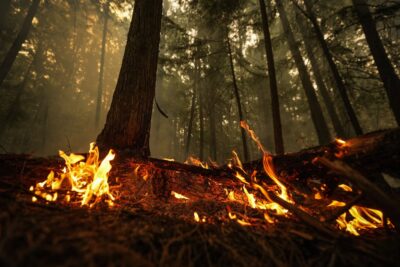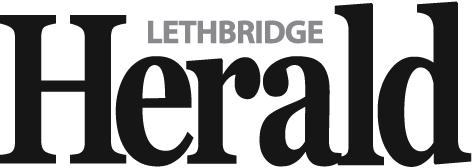Planned burn could have killed trapped firefighters, says B.C. safety report
By Canadian Press on May 7, 2025.

British Columbia’s worker protection agency says a planned burn by the province’s wildfire service during the devastating 2023 fire season could have killed or injured multiple firefighters who became “trapped by extreme fire behaviour” that cut off their escape.
Inspection reports by WorkSafeBC say the BC Wildfire Service didn’t adequately ensure safety during the burn in the Shuswap region on Aug. 17 that year, and a group of trapped Brazilian firefighters had to retreat to a “safe zone.”
WorkSafeBC says they had to burn off fuel around their truck and spend the night because of low visibility, smoke, fire activity and falling trees.
They were picked up the next day by another crew that “cut their way into the site.”
“Other crews reportedly had to navigate off-road and around a burning pile of logging debris when the fire overcame the escape route causing damage to some trucks and causing one truck to nearly roll over in the process,” one of the reports says.
A report dated Aug. 1, 2024, was obtained by The Canadian Press, while two other reports dated Aug. 30 and Dec. 6 were later provided by WorkSafeBC in response to inquiries.
The Forests Ministry has previously said the planned ignition took place along a 10-kilometre stretch of power lines with the goal of reducing fuels in the path of an advancing wildfire, which went on to destroy dozens of homes.
The Aug. 1 WorkSafeBC report says that after fire activity increased and compromised the escape route, the trapped Brazilian firefighters sheltered in an open area below power transmission lines, where they parked their truck.
“The planning and execution of this ignition operation was not adequate to ensure worker safety and workers were put at risk as a result,” it concludes.
The employer did not provide adequate information, instruction, training or supervision for the crews involved, the report says, and the incident “could have resulted in multiple serious injuries or fatalities of workers.”
It adds that “workers did not exercise their right to refuse unsafe work,” and the employer is responsible for ensuring workers are aware of their right.
In response to a request for comment, the Forests Ministry said its priority is always the safety of the public and fire responders.
The BC Wildfire Service has been in compliance with the order from WorkSafeBC as of Dec. 6, 2024, after taking steps to update processes and procedures for planned ignitions, the ministry said in a statement.
The WorkSafeBC report from that date confirms the service had complied with its order, but notes the agency had determined there were grounds for imposing an administrative penalty over the “near miss” incident.
In an email on Tuesday, the agency said it is “now considering appropriate enforcement action” related to the planned ignition operation.
The agency noted its inspection reports are not posted publicly, but they are available upon request following review and redaction for privacy reasons.
At the time of the planned ignition on Aug. 17, two wildfires — the Lower East Adams Lake and Bush Creek blazes — had been steadily moving toward the northern shore of Shuswap Lake after they started about five weeks earlier.
Whipped up by high winds the next day, the fires went on to destroy more than 170 properties and damage dozens more in the Shuswap area. The Skwlax te Secwepemculecw First Nation lost more than 80 structures.
B.C.’s Forest Practices Board was also investigating the province’s response to the same wildfires after receiving a complaint from a local resident.
Jim Cooperman told The Canadian Press in 2023 that he filed the complaint alleging “gross negligence” by the BC Wildfire Service in conducting the burn just beyond power lines about two kilometres from his home in Lee Creek.
Cooperman said he was convinced it was the planned ignition, not the wildfires themselves, that raced down the slope on Aug. 18.
He said the power lines meant to act as a fire break were surrounded by dead brush and instead became a “conduit” for the flames.
The fire would eventually stop about 15 metres from the back of his home on the property where Cooperman has lived since 1969.
Cooperman said it’s his understanding that the report from the Forest Practices Board’s investigation is still being finalized.
In an email on Tuesday, he said the WorkSafeBC report “confirms the concerns” of many in the area, that the wildfire service was irresponsible and unethical in conducting the ignition “just prior to a major windstorm.”
The community is still “reeling” from the destructive firestorm, he said, adding it caused “severe” economic and emotional stress for local residents.
“Since the fire we have been seeking accountability from the B.C. government,” Cooperman said. “This report strengthens our case.”
The Aug. 1 WorkSafeBC report says interviews with workers involved in the burn revealed a “lack of planning contributed the entrapment incident.”
The BC Wildfire Service’s own analysis report following the incident mentions there was “no consideration towards ground resource co-ordination” as part of the planning process for the ignition, the inspection report says.
It says ground crews were given “limited verbal instructions but were not given a briefing prior to this ignition operation.”
The report says such an “advanced” operation would have required an ignition specialist to be present, but no one involved held that designation.
It also says the BC Wildfire Service’s “facilitated learning analysis” following the incident referenced workers being given verbal instructions, “but there was not time for a planning session on the ground.”
The Forests Ministry has said the planned ignition was complete within roughly two hours.
“The purpose of (the burn) was not to contain the wildfire but reduce its intensity and provide a greater chance of survival to any structures in its projected path,” it said in response to a previous request for comment.
“While we know the extreme conditions on the day resulted in significant structure loss, we know the planned ignition saved structures in Lee Creek.”
A bulletin posted by the Columbia Shuswap Regional District at 8:30 p.m. on the day of the planned ignition said the operation was successful.
The aerial ignition of about 26 square kilometres was conducted “along the power line in the North Shuswap … creating a significant guard line,” it said.
Cooperman said his daughter called at about 12:15 p.m. the following day to say she could see flames in the hills above nearby Scotch Creek.
He had packed up and left by 1:15 p.m., about an hour before the district issued an evacuation order for the Lee Creek and Scotch Creek areas.
“Our home place is now just ashes and burnt sticks. It’s very difficult for us,” Cooperman said in an interview in the fall of 2023.
A few days after the firestorm, the director of operations for the BC Wildfire Service defended the planned ignition, saying sustained high winds that changed the course of the fire were responsible for much of the damage.
“I want to be perfectly clear: that planned ignition saved hundreds of homes and properties along the north Shuswap,” Cliff Chapman told media.
This report by The Canadian Press was first published May 7, 2025.
Brenna Owen, The Canadian Press
47-46



★彡[𝐇𝐨𝐰 𝐓𝐨 𝐌𝐚𝐤𝐞 𝐄𝐱𝐭𝐫𝐚 𝐈𝐧𝐜𝐨𝐦𝐞 𝐅𝐫𝐨𝐦 𝐇𝐨𝐦𝐞]彡★
Full easy and very simple online money earning job to make dollars online. From this job I have made $64296 in just 4 months. I just gave this job my spare time after my whole busy day because I am a student and this job changes my life completely. so simple Jobs no special skills required for this job. get this by following instructions on this page.
===))> http://www.get.salary7.com